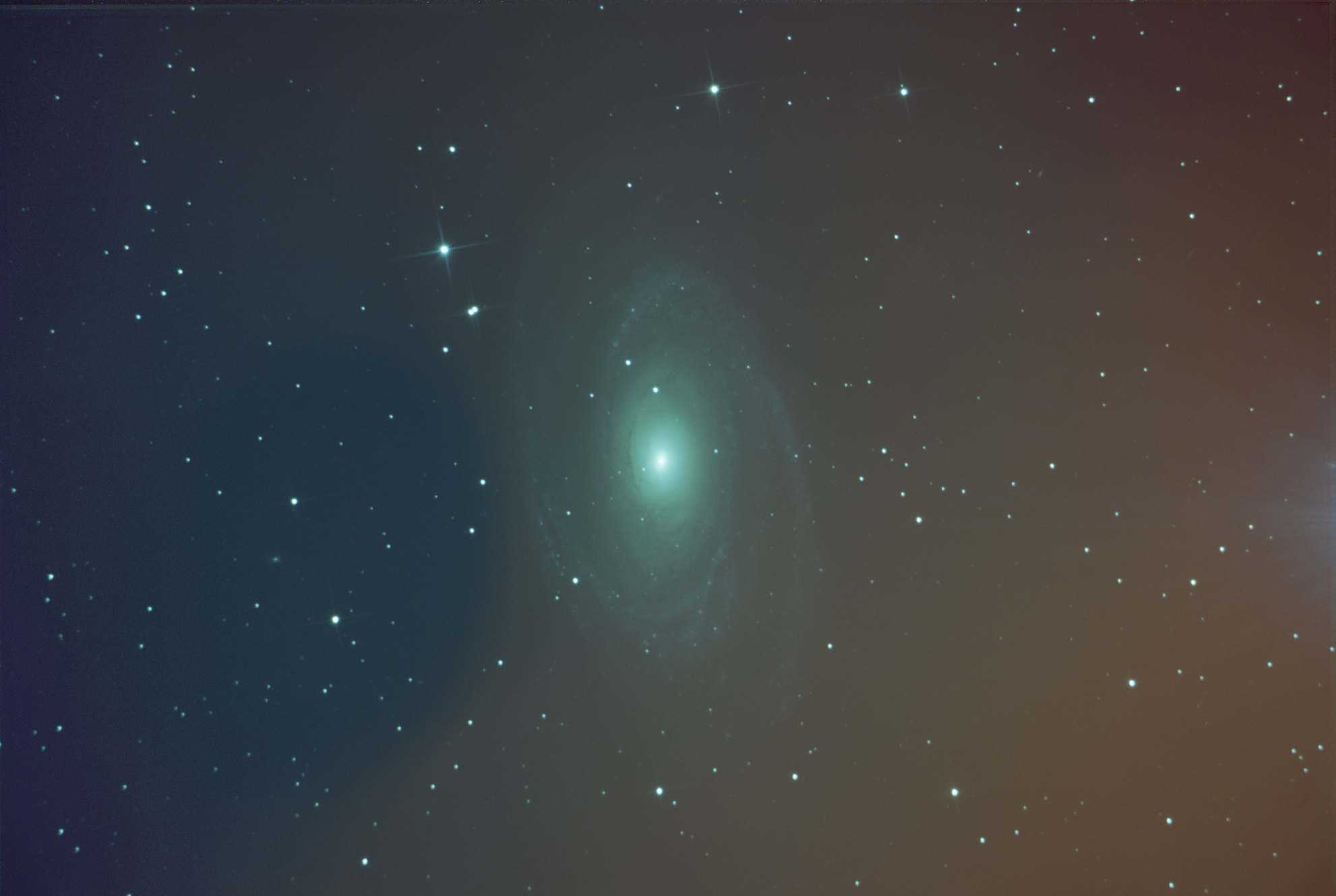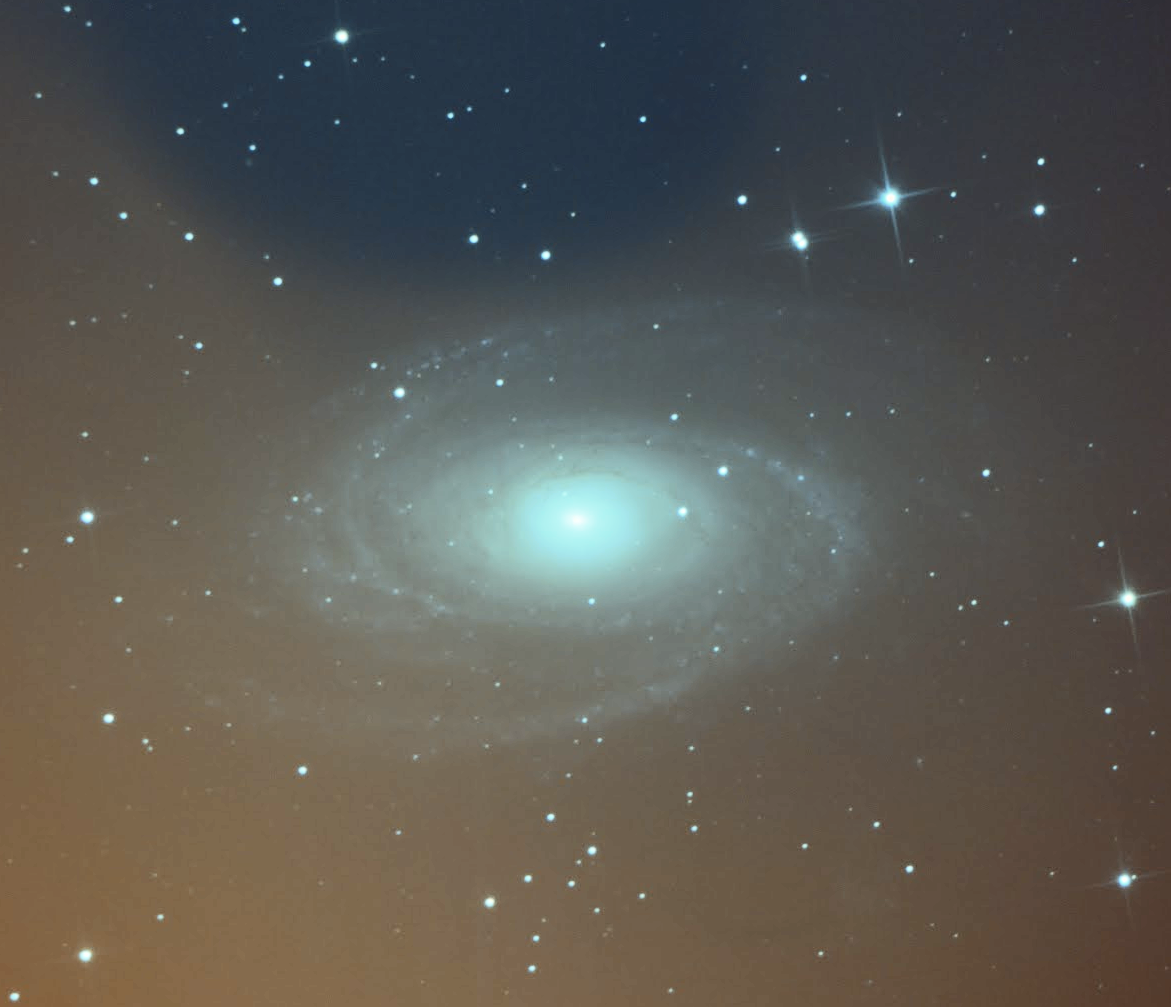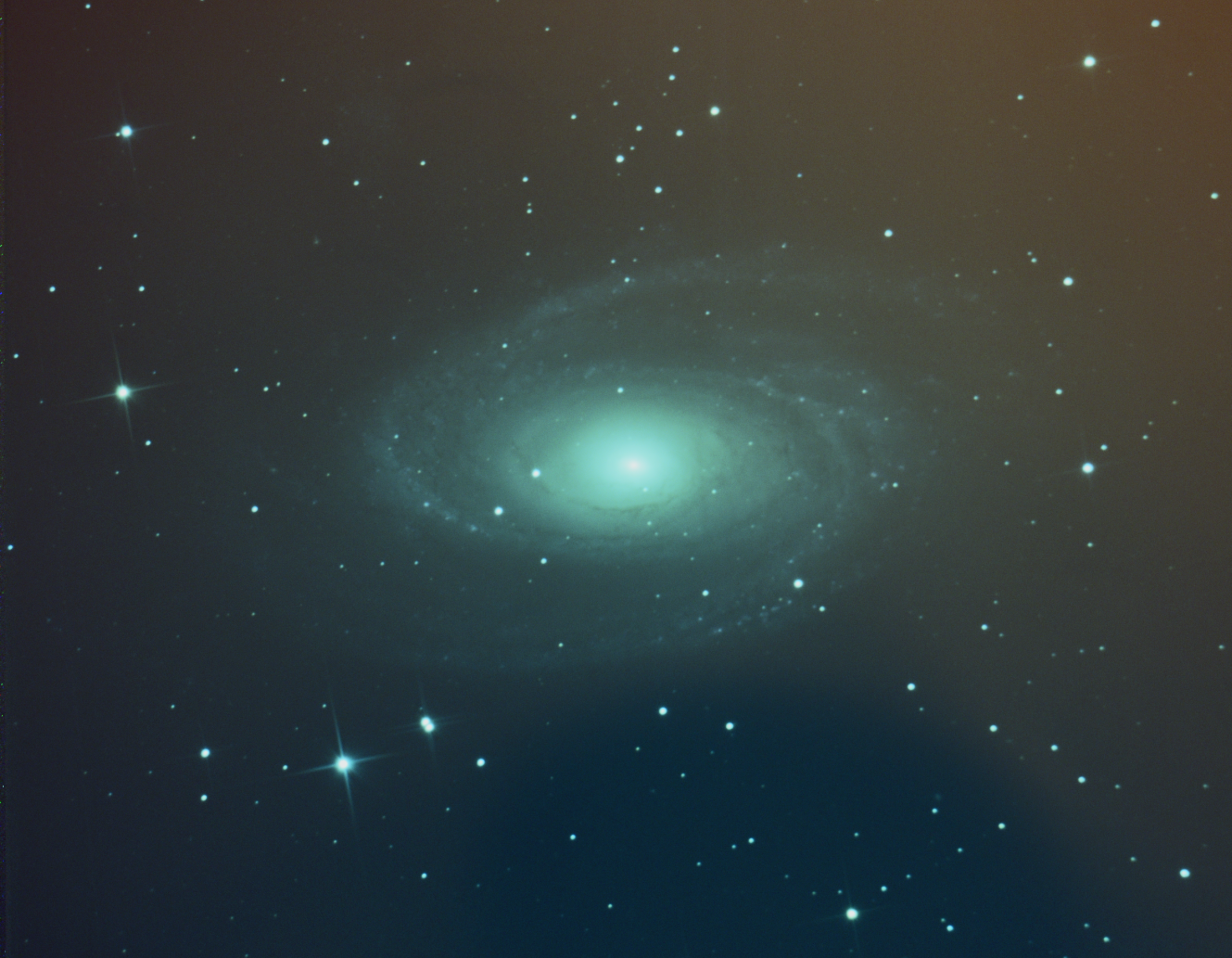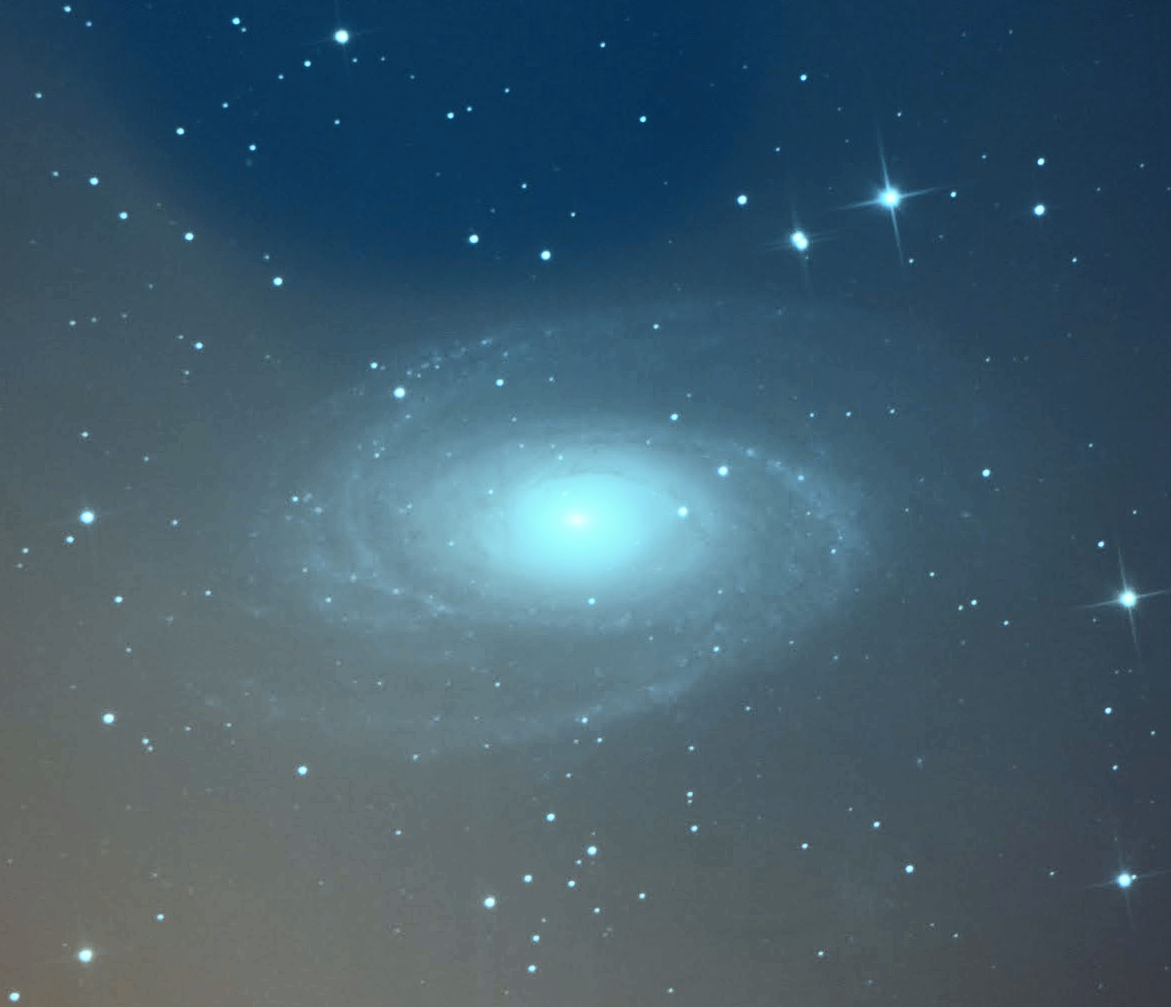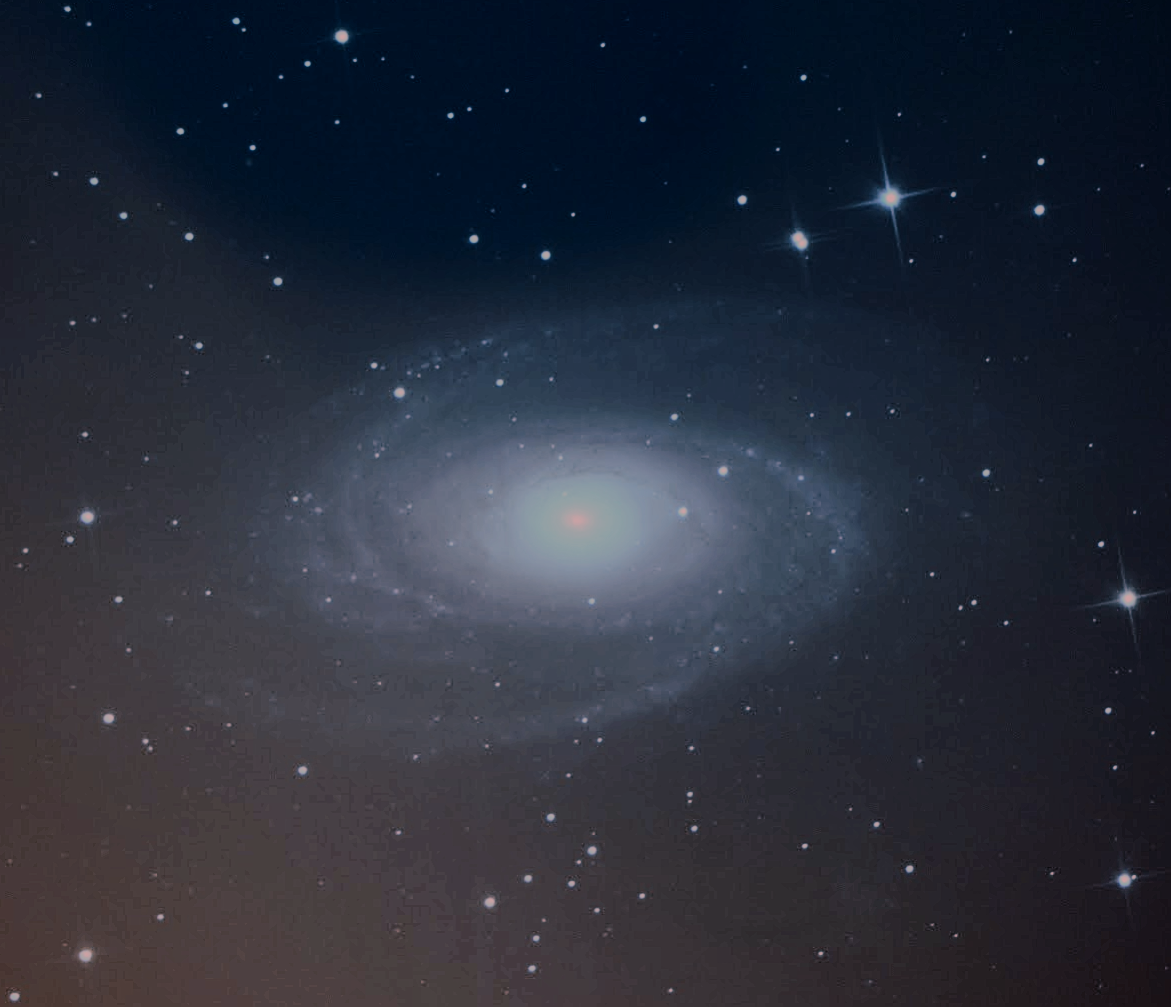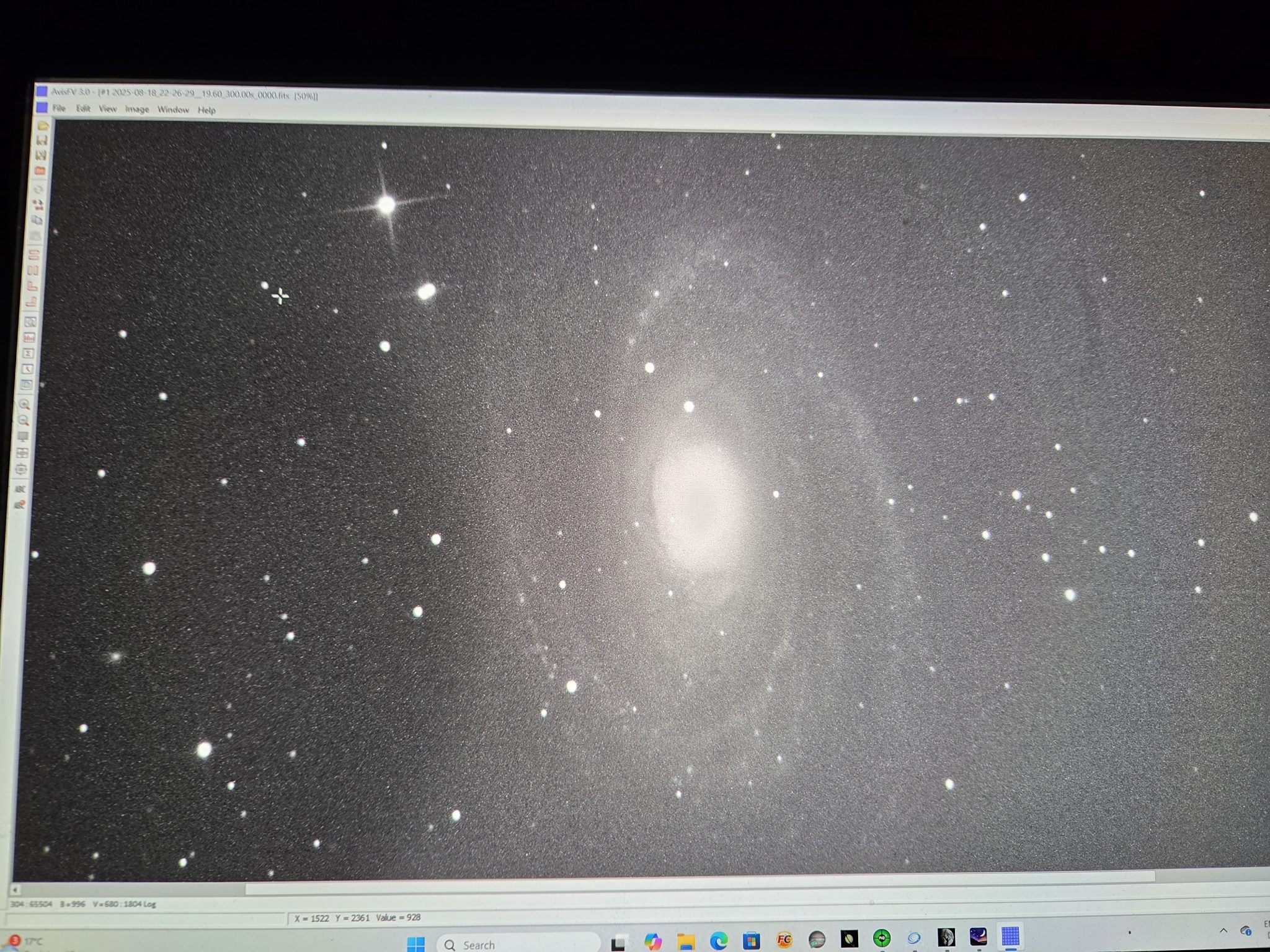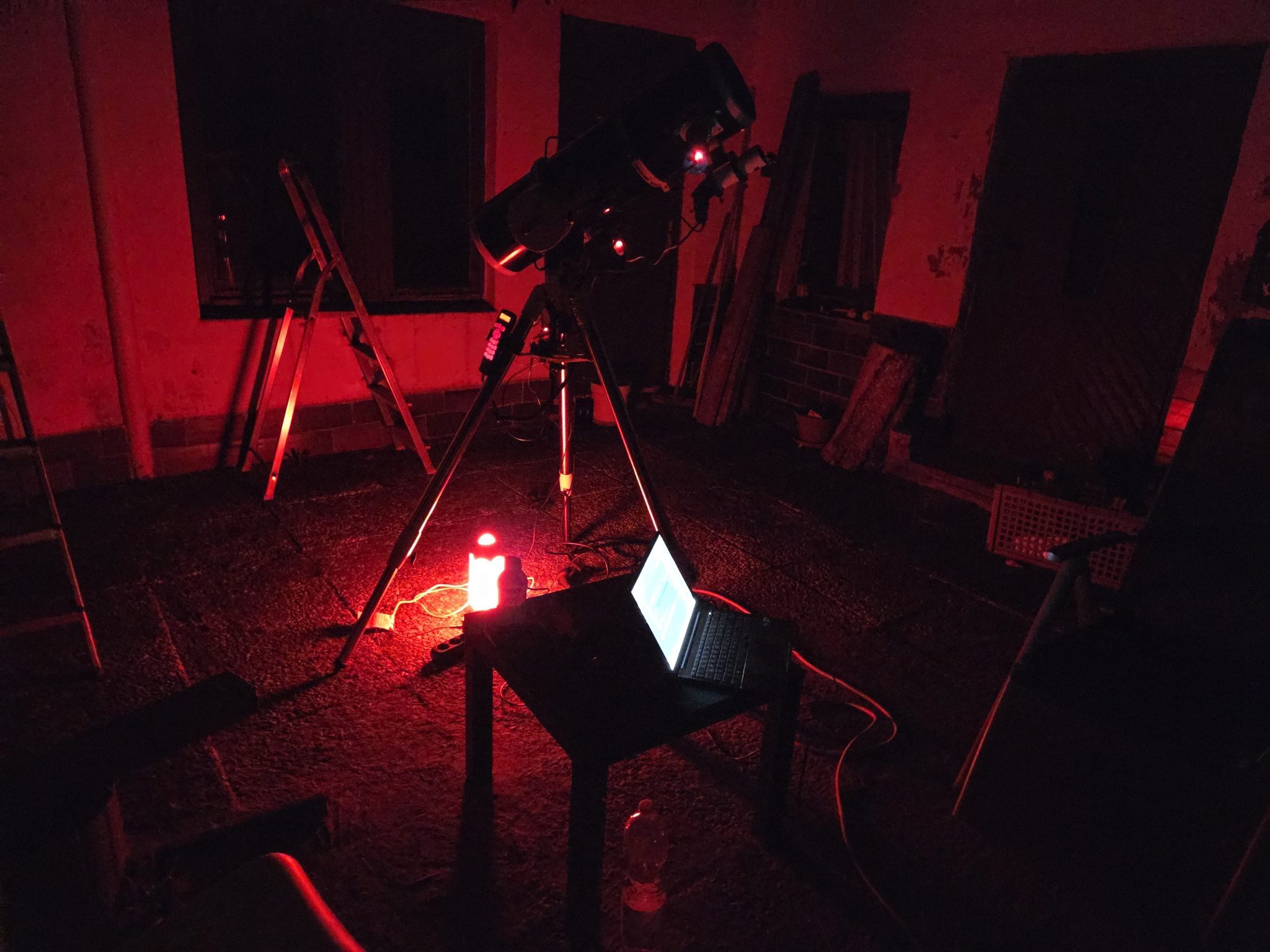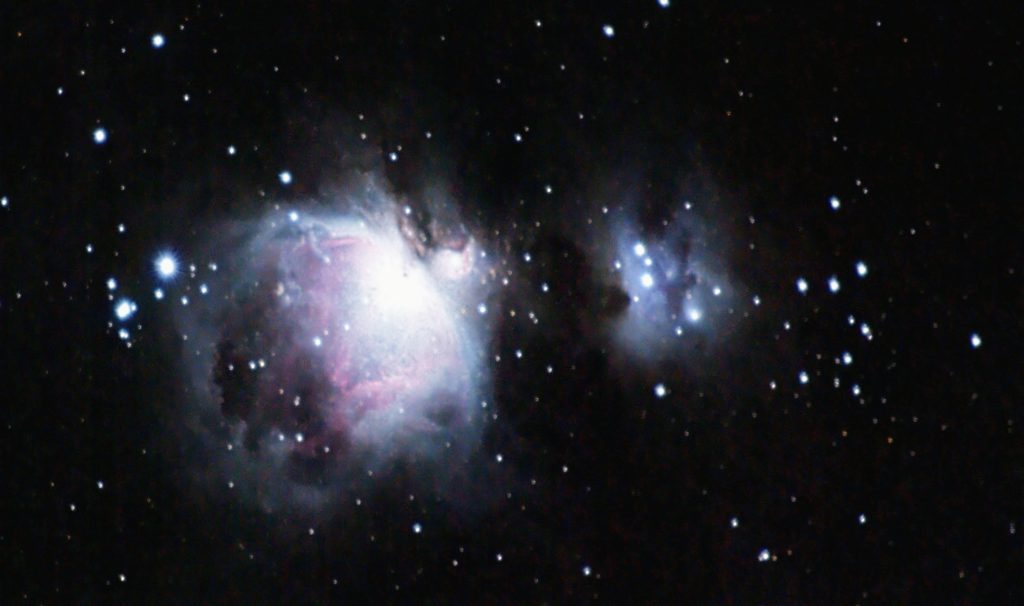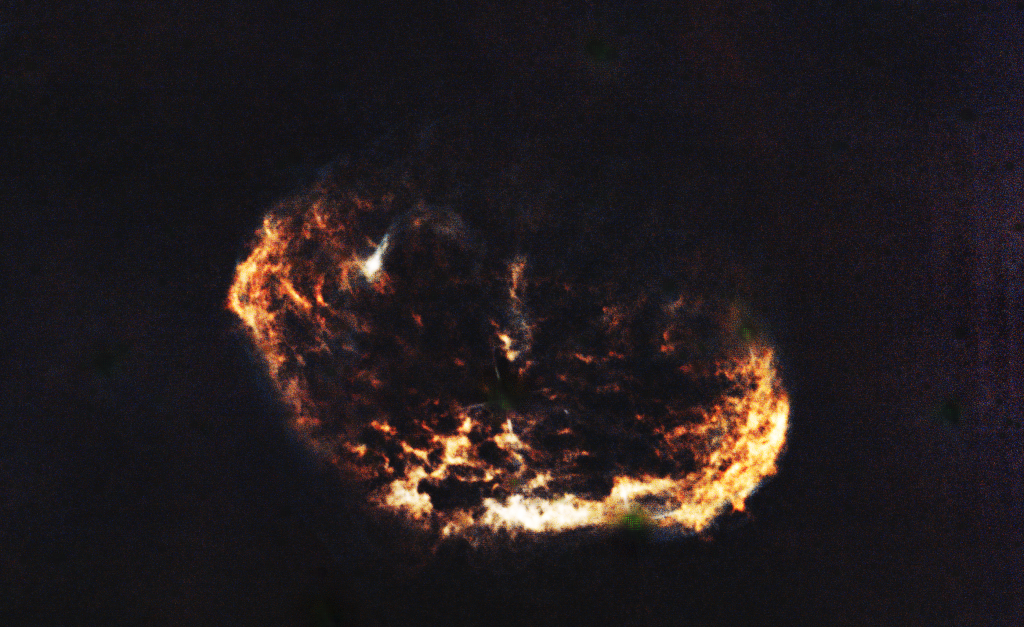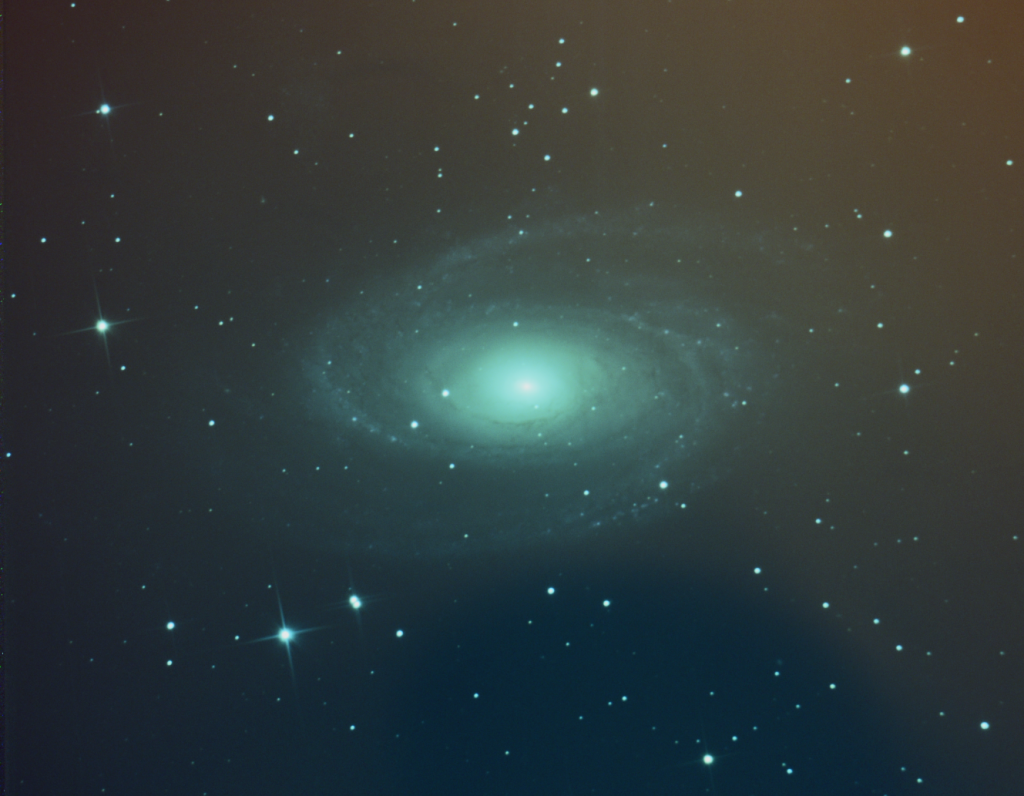
Bode’s Galaxy (Messier 81, M81)
Bode’s Galaxy is a grand design spiral galaxy located about 12 million light-years away in the constellation Ursa Major. With a diameter of roughly 90,000 light-years, it is slightly smaller than our own Milky Way but shares a very similar structure.
It was discovered in 1774 by Johann Elert Bode, from whom it takes its name. M81 is one of the brightest galaxies in the northern sky and can be seen with binoculars or small telescopes under dark skies.
In astrophotography, Bode’s Galaxy is a favorite target because of its well-defined spiral arms, rich dust lanes, and a bright, active nucleus. This central region contains a supermassive black hole estimated to be 70 million times the mass of the Sun.
M81 is part of the M81 Group of galaxies, which also includes the nearby Cigar Galaxy (M82). The gravitational interaction between M81 and M82 has shaped both galaxies, triggering intense star formation in M82 and subtly warping the spiral arms of M81.

Type: Spiral galaxy (SA(s)ab)
Distance: ~12 million light-years
Diameter: ~90,000 light-years
Location: Constellation Ursa Major
Notable neighbor: M82 (Cigar Galaxy)
Taken with
- Skywatcher Explorer 200/1000
- Touptek 183 CA
- On Skywatcher EQ 5 Pro Mount
- Guide scope TS Optics 50/90
- Guide Camera Touptek 327C
- Sequencer NINA Advanced Sequencer.
- Guiding with PHD2
- Exposures 20 x 600 secs
- Stacking 13 Frames in ASTAP
- Streach and Beackground removeal with Siril & GraXpert
- Final Touch GIMP
